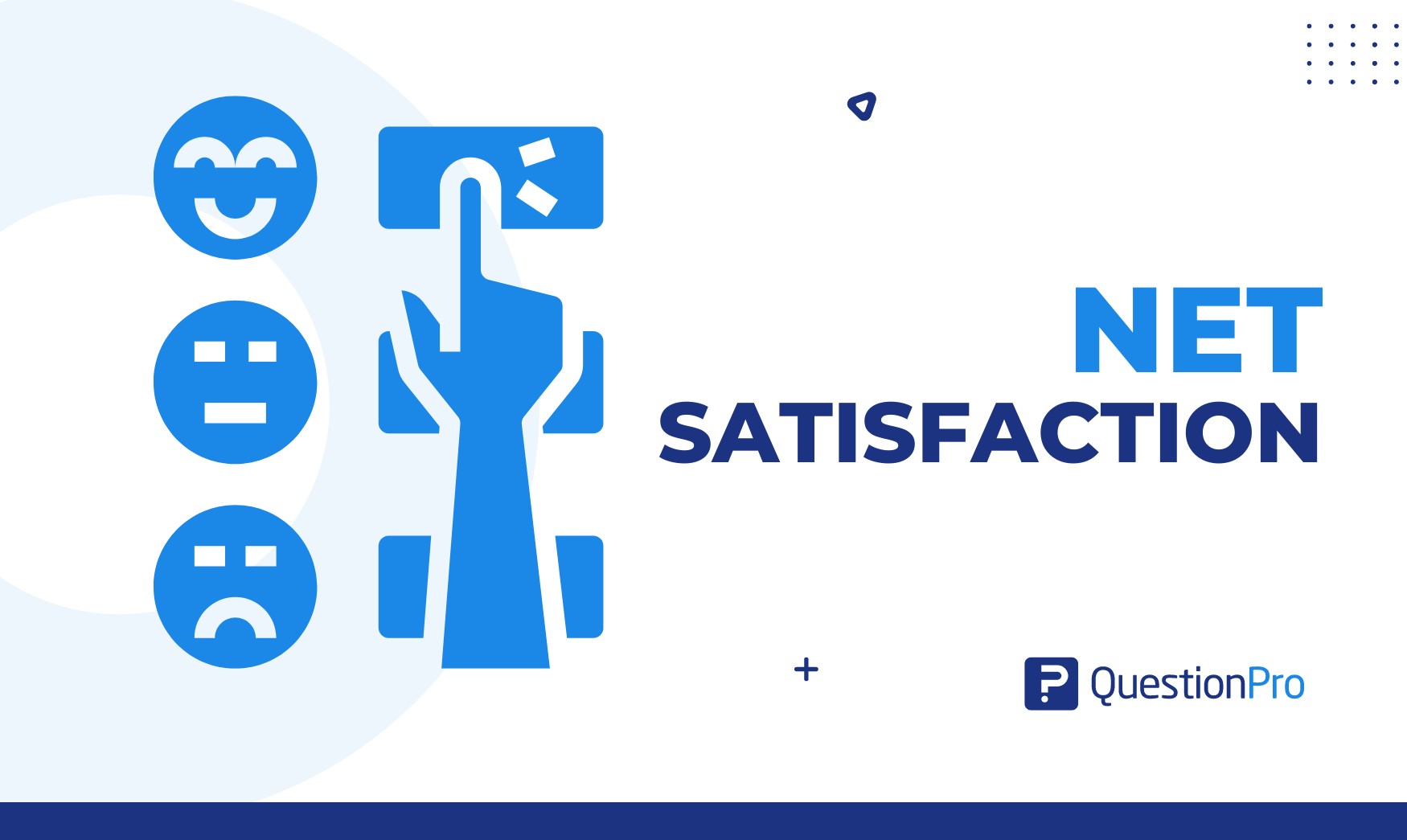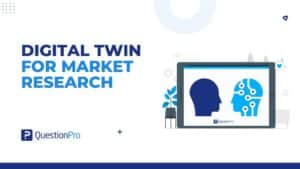
Net satisfaction (NSAT) is the standard method you can use to measure and report satisfaction. This standard ensures that your measurements and presentations are consistent.
Using different scales can cause inconsistencies in NSAT. These inconsistencies can lead to misunderstandings and incorrect comparisons or decisions, which may have negative effects.
The NSAT standard prevents this problem by providing you with a clear and uniform way to measure and present internal customer satisfaction scores. This ensures that your results are clear and based on agreed-upon metrics.
In this blog, we will learn about its calculation, essential tools, and business applications to improve customer and employee experiences.
What is Net Satisfaction?
Net satisfaction is a key performance indicator (KPI) used to measure the overall satisfaction level of a group of people, such as customer satisfaction or employee satisfaction, with a product, service, or experience. It is calculated by taking the percentage of respondents who report being satisfied and subtracting the percentage who report being dissatisfied.
To calculate the NST score, you need to use responses to a satisfaction question with these four options:
- Very Satisfied
- Somewhat Satisfied
- Somewhat Dissatisfied
- Very Dissatisfied
We also suggest adding these extra options for participants:
- Don’t Know
- Not Applicable
However, do not include these extra responses in the NSAT calculation. Including them would skew the results.
Calculating Net Satisfaction
The net satisfaction metric is straightforward yet powerful. It provides a quick snapshot of overall satisfaction by balancing positive and negative sentiments. Here’s how it works:
Formula: Net Satisfaction = % Satisfied − % Dissatisfied
By subtracting the percentage of dissatisfied respondents from the percentage of satisfied respondents, the net satisfaction score indicates the overall sentiment. Where:
- Percentage of Satisfied Respondents: This is the proportion of respondents who express satisfaction with a product, service, or experience. It usually includes those who rate their satisfaction as “satisfied” or “very satisfied” on a survey.
- Percentage of Dissatisfied Respondents: This represents the proportion of respondents who express dissatisfaction, usually those who rate their experience as “dissatisfied” or “very dissatisfied.”
For instance, if 70% of customers report being satisfied with a service and 20% report being dissatisfied, the net satisfaction score would be 50%.
Examples of Net Satisfaction Calculation
Net satisfaction helps organizations quickly assess the overall sentiment about their products, services, or experiences. It highlights areas of strength and identifies areas for improvement.
By regularly measuring and tracking net satisfaction, organizations can make informed decisions to improve customer and employee experiences, leading to better results. Here are some examples of this satisfaction metric.
Example 1: Customer Satisfaction Survey
Imagine a company conducts a customer satisfaction survey for its new product. Out of 1,000 respondents:
- 700 respondents (70%) indicate they are satisfied.
- 100 respondents (10%) indicate they are dissatisfied.
Calculation: Net Satisfaction = 70% −10% = 60%
A net satisfaction score of 60% suggests that the majority of customers are satisfied, with a significant positive balance.
Example 2: Employee Satisfaction Assessment
A company assesses employee satisfaction regarding their work environment. Out of 500 employees:
- 300 employees (60%) indicate they are satisfied.
- 150 employees (30%) indicate they are dissatisfied.
Calculation: Net Satisfaction = 60% − 30% = 30%
A net satisfaction score of 30% indicates a positive sentiment among employees, though there is room for improvement.
Example 3: Service Evaluation
A hotel evaluates guest satisfaction with their stay. Out of 200 guests:
- 150 guests (75%) indicate they are satisfied.
- 40 guests (20%) indicate they are dissatisfied.
Calculation: Net Satisfaction = 75% − 20% = 55%
A net satisfaction score of 55% indicates that most guests are happy with their stay, although some dissatisfaction exists.
Importance of Net Satisfaction in Business and Customer Service
Net satisfaction is crucial for businesses and customer service for several reasons:
- Performance Indicator: It shows how well you meet the needs of your customers or employees. High scores indicate strong performance, while low scores show areas needing improvement.
- Customer Retention: Satisfied customers are more likely to stay loyal, make repeat purchases, and recommend your business. Dissatisfied or unhappy customers may leave and discourage others.
- Employee Morale: Measuring employee satisfaction reveals workplace morale. Happy employees are more productive and less likely to leave.
- Competitive Advantage: High net satisfaction helps you stand out from competitors by building a strong reputation.
- Feedback for Improvement: Net satisfaction scores guide you on where to improve. Addressing dissatisfaction can lead to better products and services.
- Strategic Decision Making: You can use net satisfaction data to make informed decisions about product development, marketing, and customer service.
Applications of Net Satisfaction
Net satisfaction is a powerful metric you can use in different areas to improve experiences, engagement, and perceptions. Here are three main areas where net satisfaction is commonly applied:
01. Customer Satisfaction Surveys
Customer satisfaction surveys help businesses understand their customer’s experiences and perceptions. By calculating net satisfaction, you can determine the overall customer satisfaction score. This helps you identify:
- Strengths
- Weaknesses
- Trends
For instance, if your retail store conducts a survey and finds a net satisfaction score of 40%, it means that satisfied customers significantly outnumber dissatisfied ones. This insight allows you to maintain your strengths and address any issues causing dissatisfaction.
02. Employee Satisfaction Assessments
Employee satisfaction is crucial for maintaining a motivated, productive, and loyal workforce. NSAT scores in employee satisfaction assessments give you a clear picture of how your employees feel about their work environment, management, and job roles. Key applications include:
- Identifying Morale Issues
- Enhancing Retention
- Boosting Productivity.
03. Product and Service Evaluations
Evaluating products and services through net satisfaction scores helps you understand how well you are meeting customer expectations. Applications in this context include:
- Product Development
- Market Positioning
- Quality Control
Tools and Methods for Measuring Net Satisfaction
Measuring net satisfaction requires a clear process that includes creating surveys, gathering data, and analyzing it. Each step is important to make sure the results are accurate and dependable.
01. Survey Design and Question Types
First, clearly define the survey’s purpose and identify the target respondents, such as customers or employees. Keep the survey concise to maintain engagement, starting with easy questions before moving to more specific ones.
Conduct a pilot test to identify and fix any issues with question clarity or survey flow before the full rollout. The question types you can use:
- Likert Scale Questions: Commonly used to measure satisfaction, these questions ask respondents to rate their agreement with statements on a scale (e.g., 1 to 5, where 1 is “Strongly Disagree” and 5 is “Strongly Agree”).
- Dichotomous or Binary Questions: Simple yes/no questions to measure satisfaction quickly.
- Open-Ended Questions: Allow respondents to provide detailed feedback. These are useful for gaining insights into specific areas of dissatisfaction or suggestions for improvement.
- Multiple Choice Questions: Provide predefined answers to help quantify specific aspects of satisfaction.
02. Data Collection Methods
Gathering data is essential for your research. It helps you collect information from different sources. Various data collection methods each have their own advantages and can be selected depending on your research objectives and audience. Here, we explore several common data collection methods.
- Online Surveys: Online surveys are a popular data collection method due to their convenience and reach. They are cost-effective and can quickly gather a large amount of data. They can be:
- Email Surveys
- Website Surveys
- Mobile Surveys
- In-Person Surveys: In-person surveys involve directly interacting with respondents. This method allows for more detailed responses and immediate clarification of questions if needed. It can be:
- Face-to-Face Interviews
- Paper Surveys
- Telephone Surveys: Telephone surveys involve conducting interviews over the phone, where respondents answer questions asked by an interviewer. This method can reach a broad audience and provide a personal touch with:
- Computer-Assisted Telephone Interviewing (CATI)
- Manual Calls
- Social Media and Online Communities: Social media and online communities offer a dynamic platform for gathering data from a broad audience. You can collect real-time feedback, opinions, and trends by engaging with users on platforms like Facebook, Twitter, and forums. You can use:
- Social Media Polls
- Online Communities
03. Analysis Techniques
To understand net satisfaction effectively, it’s essential to use various analysis techniques. These methods help in interpreting data collected from surveys and other sources to gauge how satisfied individuals are and what drives their satisfaction or dissatisfaction.
- Quantitative Analysis: Quantitative analysis involves examining numerical data to measure satisfaction levels. By using statistics, you can find averages, percentages, and trends to see overall satisfaction. This approach includes:
- Descriptive Statistics
- Net Satisfaction Score Calculation
- Trend Analysis
- Qualitative Analysis: Qualitative analysis focuses on understanding the reasons behind satisfaction or dissatisfaction by analyzing non-numeric data, such as open-ended survey responses or interview transcripts. This method includes:
- Thematic Analysis
- Content Analysis
- Advanced Statistical Techniques: Advanced statistical techniques involve using complex models and algorithms to analyze data in more depth. Techniques are like this:
- Regression Analysis
- Factor Analysis
- Visualization: Visualization involves creating graphical representations of data to make interpreting and communicating findings easier. This can be:
- Graphs and Charts
- Heatmaps
Challenges in Measuring Net Satisfaction
Measuring net satisfaction can be complex and challenging because many factors can affect the results and make it hard to get accurate information. Knowing these challenges is important for getting useful insights and making effective improvements.
1. Common Pitfalls and Biases
Measuring overall satisfaction can be challenging due to several pitfalls and biases:
- Survey Design Bias
- Response Bias
- Sampling Bias
- Non-response Bias
- Recency Effect
2. Ensuring Accurate and Reliable Data
To obtain accurate and reliable net satisfaction data, it’s crucial to address the aforementioned challenges:
- Survey Design
- Representative Sampling
- Encouraging Participation
- Regular Monitoring
- Data Triangulation
3. Handling Negative Feedback
Negative feedback is an inevitable part of measuring net satisfaction, but it can be incredibly valuable for improvement:
- Acknowledge and Act
- Analyze Patterns
- Continuous Improvement
- Transparency
Net Satisfaction vs. Other Metrics
When evaluating customer experiences, it’s important to consider how Net Satisfaction compares to other key metrics.
Here, we’ll explain how it compares to popular metrics like Net Promoter Score (NPS) and Customer Satisfaction Index (CSI), and how it fits with other performance indicators to give you a full picture of customer feelings and business success.
01. Comparison with Net Promoter Score (NPS)
Net Satisfaction and Net Promoter Score are both popular metrics for measuring customer feedback, but they have different focuses. Net Satisfaction measures overall contentment by subtracting the percentage of dissatisfied respondents from satisfied ones. This provides a broad view of how happy the entire group is.
On the other hand, NPS surveys measure the likelihood that customers would recommend a product or service. It divides respondents into three categories:
- Promoters
- Passives, and
- Detractors
It focuses on loyal customers and advocacy.
02. Differences from Customer Satisfaction Index (CSI)
The Customer Satisfaction Index (CSI) is a detailed measure that examines various aspects of satisfaction, such as:
- Quality
- Value
- Service
On the other hand, Net Satisfaction is a simpler measure that shows the balance between satisfied and dissatisfied customers.
03. Integration with Other Performance Indicators
To get a full picture of performance, it helps to look at Net Satisfaction along with other measures:
- Customer Retention Rates: Comparing Net Satisfaction with how well you keep customers can show how satisfaction affects loyalty.
- Revenue Growth: Looking at how Net Satisfaction relates to revenue growth can reveal how satisfaction impacts financial results.
- Employee Engagement Scores: Adding employee satisfaction data can show how engaged employees might influence customer satisfaction.
- Operational Metrics: Connecting Net Satisfaction with operational metrics (like response times and service quality) can pinpoint where improving operations might boost satisfaction.
How QuestionPro Survey Software Can Help in Net Satisfaction?
QuestionPro Survey Software is a versatile tool that can help you measure and analyze satisfaction levels. It provides valuable insights into your customer and employee experiences. Here’s how QuestionPro can assist you:
- Easy to Use: QuestionPro has an easy-to-use design that makes creating surveys quick and simple. You can customize surveys to cover all important aspects of satisfaction.
- Variety of Questions: The platform allows you to use different types of questions, such as Likert scale, multiple-choice, and open-ended, to get a complete picture of satisfaction levels.
- Net Promoter Score (NPS) Surveys: QuestionPro enables you to easily create NPS surveys with the standardized question: “How likely are you to recommend our product/service to a friend or colleague?” This helps measure customer loyalty and predict business growth.
- Customer Satisfaction (CSAT) Surveys: QuestionPro supports CSAT surveys that ask customers to rate their satisfaction with a product, service, or interaction.
- Multi-Channel Distribution: You can distribute surveys through email, social media, and mobile devices, which will help you reach your target audience effectively.
- Anonymity and Confidentiality: QuestionPro ensures that respondents’ identities are kept anonymous and their data is confidential, which can lead to more honest feedback.
- Real-Time Reports: You can see data instantly and generate reports right away, which can help you spot trends and issues quickly.
- Visual Data: The platform offers charts and graphs to help you understand and interpret your data easily.
- Trend Analysis: By monitoring satisfaction scores over time, you can identify trends and make long-term improvements.
- Feedback Segmentation: You can segment feedback by demographics like age and location to get a clearer picture of specific satisfaction areas.
- Integration with Other Tools: It integrates with CRM systems, email marketing tools, and other software, making your data analysis process smoother.
Conclusion
Net satisfaction is more than just a metric; it shows how well an organization is doing. You can make smart decisions to improve your products, services, and overall experience by measuring how satisfied or dissatisfied people are. High net satisfaction scores can increase loyalty, boost employee morale, and give you a stronger edge over competitors.
QuestionPro Survey Software offers all the tools you need to measure and enhance net satisfaction, including survey design, data collection, real-time analysis, and actionable insights. By using QuestionPro’s features, you can effectively track and improve your satisfaction metrics, leading to better experiences for your customers and employees and driving your success.







